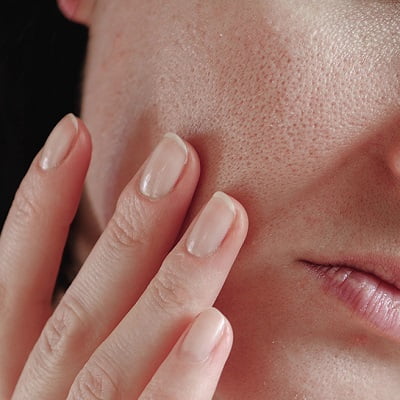
Pores are a natural part of our skin, but for many people, enlarged pores can be a source of frustration and insecurity. While you can’t change the size of your pores permanently, several dermatologist-approved tips and techniques can help reduce their appearance and improve the overall texture of your skin.
This blog will explore six effective strategies to shrink your pores and achieve smoother, more radiant skin. So, take a moment and read the following details!
What are Pores?
Before delving into the tips, it’s essential to understand what pores are and why they sometimes appear more prominent than we’d like. Pores are tiny openings on the surface of your skin that serve as exit points for hair follicles and oil glands.
Their primary function is to release sweat and sebum to keep your skin moisturized and calm. Pore size is primarily determined by genetics, so if you have naturally large pores, there’s not much you can do to change their size permanently.
Gentle Cleansing:
Effective cleansing is the foundation of any skincare routine, mainly if you aim to reduce the size of your pores. Dirt, makeup, and excess oil can accumulate in your pores, making them appear larger. To combat this, dermatologists recommend a gentle cleansing routine.
Here’s how to do it:
- Use a mild cleanser: Choose a gentle, sulfate-free cleanser that won’t strip your skin of its natural oils. Cleansing too harshly can lead to overproduction of oil, exacerbating pore size.
- Cleanse twice daily: Cleanse your face in the morning and before bedtime to clear your pores of impurities.
- Avoid hot water: Use lukewarm water when cleansing your face, as hot water can irritate and dry out your skin, leading to increased oil production.
Exfoliation:
Regular exfoliation is essential for removing dead skin cells that can accumulate and make your pores appear more prominent. There are two main types of exfoliation: physical (using scrubs or brushes) and chemical (using products with active ingredients like alpha hydroxy acids or beta hydroxy acids).
Consider these exfoliation tips:
- Choose the right exfoliant: Consult a dermatologist to determine whether physical or chemical exfoliation is best for your skin type.
- Don’t over-exfoliate: Overdoing it can lead to irritation and worsen the appearance of your pores. Start once a week and gradually increase the frequency as your skin tolerates it.
- Use sunscreen: Exfoliating makes your skin more susceptible to sun damage, so apply broad-spectrum sunscreen during the day.
Retinoids:
Retinoids, a class of compounds derived from vitamin A, are known for their ability to improve skin texture, reduce wrinkles, and, yes, even shrink pores. They work by increasing collagen production and speeding up cell turnover, which can help prevent pores from becoming clogged with dead skin cells and oil.
Here’s how to incorporate retinoids into your routine:
- Start slowly: Begin with a lower concentration and apply it only at night. Some people may experience dryness and peeling initially, so it’s essential to ease into it.
- Use sunscreen: Like exfoliants, retinoids make your skin more sensitive to the sun. Always wear sunscreen during the day when using retinoids at night.
- Consult a dermatologist: If you’re new to retinoids or have concerns about their use, seek advice from a dermatologist who can recommend the right product for your skin type.
Hydration:
Hydration is vital to maintaining healthy skin and minimizing the appearance of pores. When your skin is dehydrated, it can produce more oil to compensate, making your pores look more prominent. By keeping your skin well-hydrated, you can help balance oil production.
Here’s how to ensure your skin stays hydrated:
- Drink water: Stay hydrated from the inside out by drinking plenty of water throughout the day.
- Use a moisturizer: Choose a non-comedogenic, oil-free moisturizer to keep your skin hydrated without clogging your pores.
- Consider a hydrating serum: Serums containing hyaluronic acid can provide an extra layer of hydration.
Professional Treatments:
If you’re looking for more immediate and significant results in reducing pore size, consider professional treatments offered by dermatologists or licensed skincare professionals. These treatments are effective but may require downtime and a financial investment.
Some professional options to explore:
- Chemical peels: These exfoliating treatments use chemical solutions to remove the top layer of skin, helping to improve pore size and overall skin texture.
- Microdermabrasion: This mechanical exfoliation method uses a device to remove the top layer of skin, revealing smoother skin underneath.
- Laser therapy: Laser treatments can stimulate collagen production and improve skin texture, reducing pore size.
- Microneedling: This procedure involves tiny needles that create controlled injuries to the skin, promoting collagen production and improving pore size over time.
All Summed Up!
While you can’t change your genetic predisposition to pore size, you can certainly take steps to reduce their appearance and improve the overall health of your skin. Additionally, professional treatments can provide more immediate results for those seeking a faster solution.
Remember that skincare is not one-size-fits-all, and it’s essential to consult with a dermatologist at SKN Cosmetic Clinic Islamabad to create a customized plan that addresses your specific skin concerns. With patience and dedication, you can achieve smoother, more radiant skin and feel confident in your complexion.









